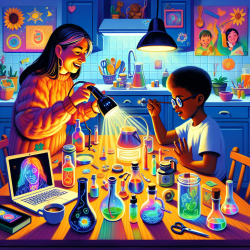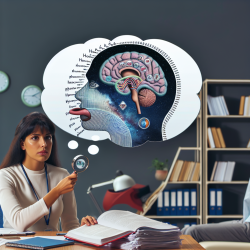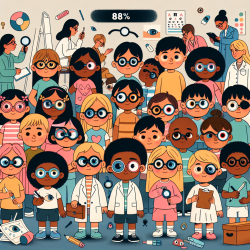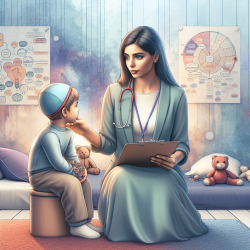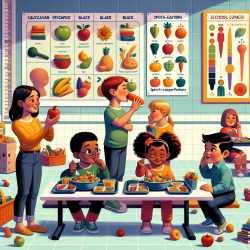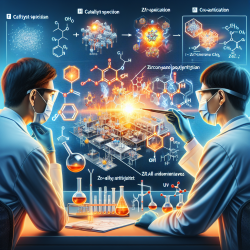Introduction
In the world of speech-language pathology, finding innovative ways to engage children and enhance their learning experience is crucial. The research article "Kitchen Spectroscopy: Shining a (UV) Light on Everyday Objects" by VanOrman and Nienhaus offers a unique perspective on how simple household items can be used to create a captivating and educational experience. This blog explores how practitioners can implement these findings to improve therapy outcomes for children, making learning both fun and scientifically enriching.
The Power of Fluorescence in Therapy
Fluorescence is not just a fascinating scientific phenomenon; it can be a powerful tool in therapy sessions. By using UV light to reveal the hidden glow in everyday objects, therapists can capture the attention of children and foster a sense of wonder and curiosity. This approach aligns with the data-driven decision-making process, as it leverages the inherent interest children have in visually stimulating activities to enhance engagement and learning.
Implementing Kitchen Spectroscopy in Therapy
Here are some practical ways therapists can incorporate the principles of kitchen spectroscopy into their sessions:
- Interactive Science Experiments: Use a UV lamp to explore the fluorescence of household items like tonic water, olive oil, and highlighter ink. Encourage children to predict which objects will glow and discuss the science behind the fluorescence.
- Language Development: As children observe and describe the glowing objects, therapists can introduce new vocabulary related to colors, light, and science, enhancing language skills in a natural context.
- Storytelling and Imagination: Create stories around the "magical" properties of fluorescent objects. This can stimulate creative thinking and narrative skills, which are essential components of language development.
Encouraging Further Exploration
The research by VanOrman and Nienhaus provides a gateway to a deeper understanding of the world around us. By encouraging children to explore fluorescence at home, therapists can extend learning beyond the therapy session. Here are some ways to inspire further exploration:
- Home Experiments: Provide simple instructions for building a homemade fluorimeter using household items. This hands-on activity can deepen children's understanding of light and color.
- Parental Involvement: Encourage parents to participate in these experiments, fostering a supportive learning environment at home and strengthening the parent-child bond.
- Research and Inquiry: Motivate children to ask questions and seek answers about the science of fluorescence, promoting critical thinking and a lifelong love of learning.
Conclusion
Integrating the principles of kitchen spectroscopy into speech-language therapy sessions offers a unique opportunity to enhance children's learning experiences. By leveraging the natural curiosity and wonder that fluorescence inspires, therapists can create engaging, educational, and enjoyable sessions that foster language development and scientific inquiry. To explore the original research and gain deeper insights, read the full paper here.
